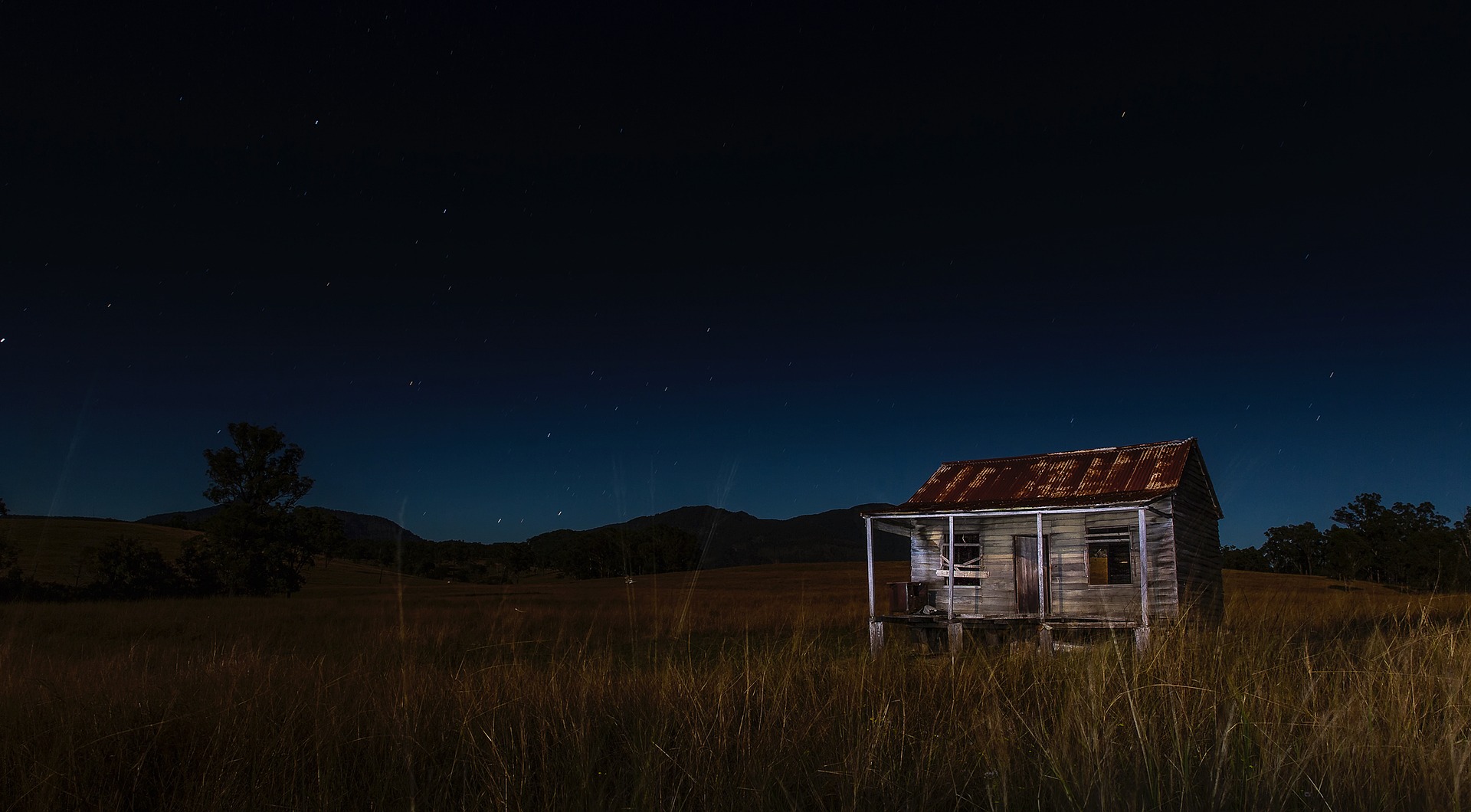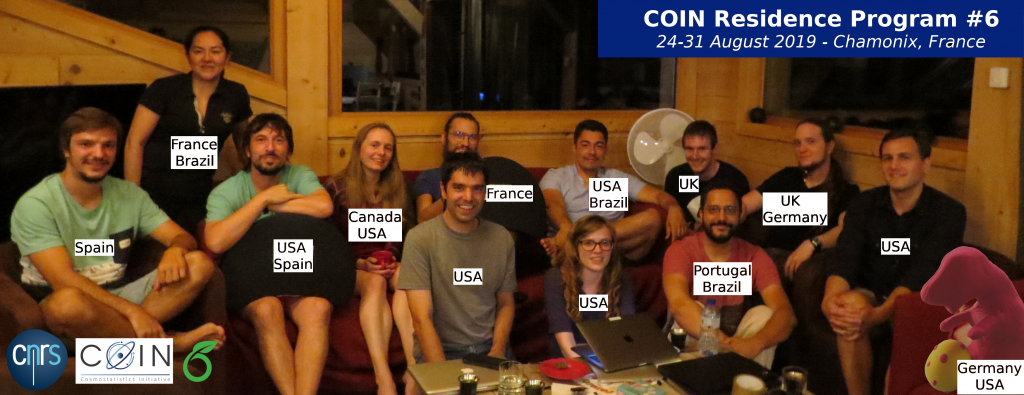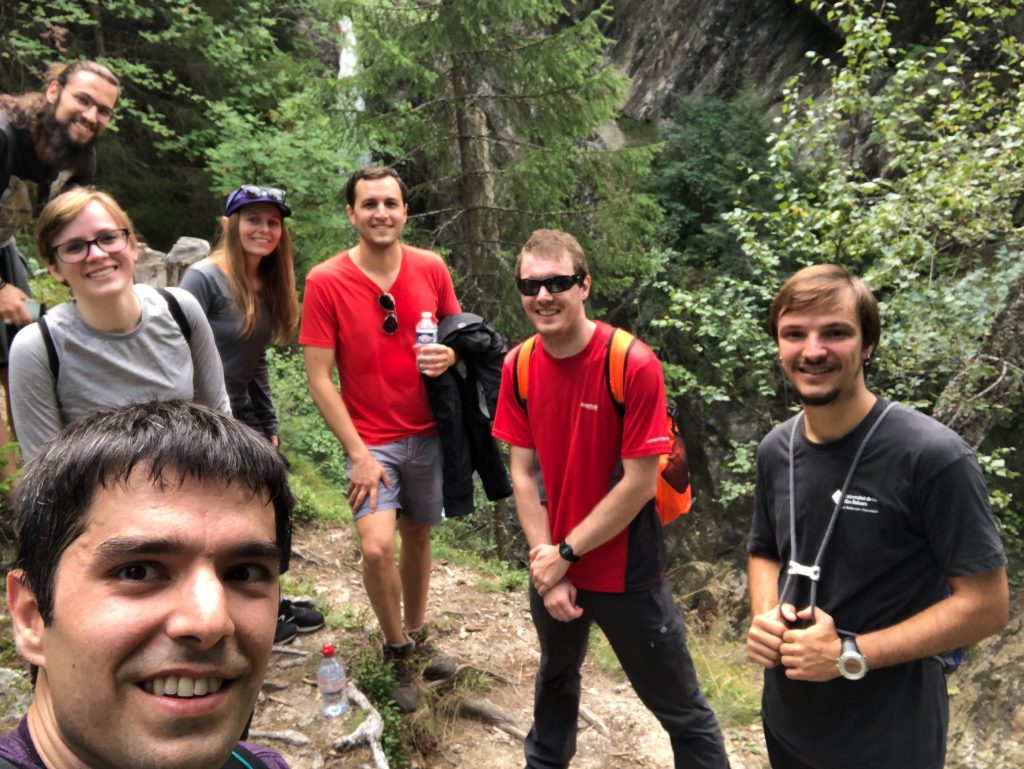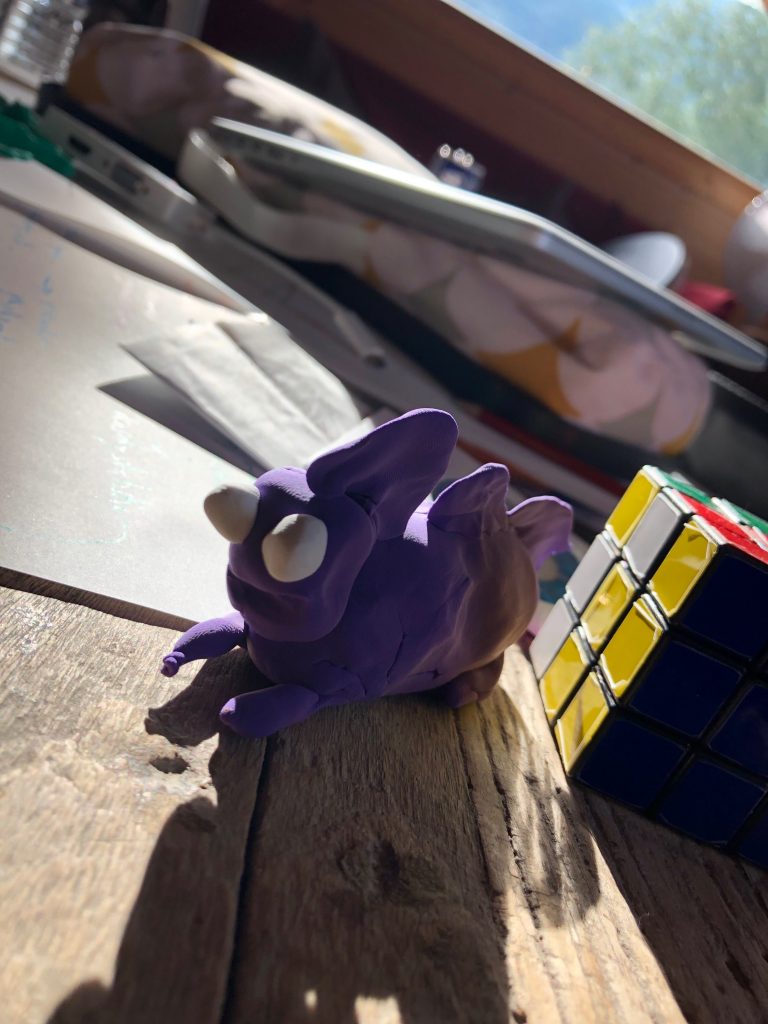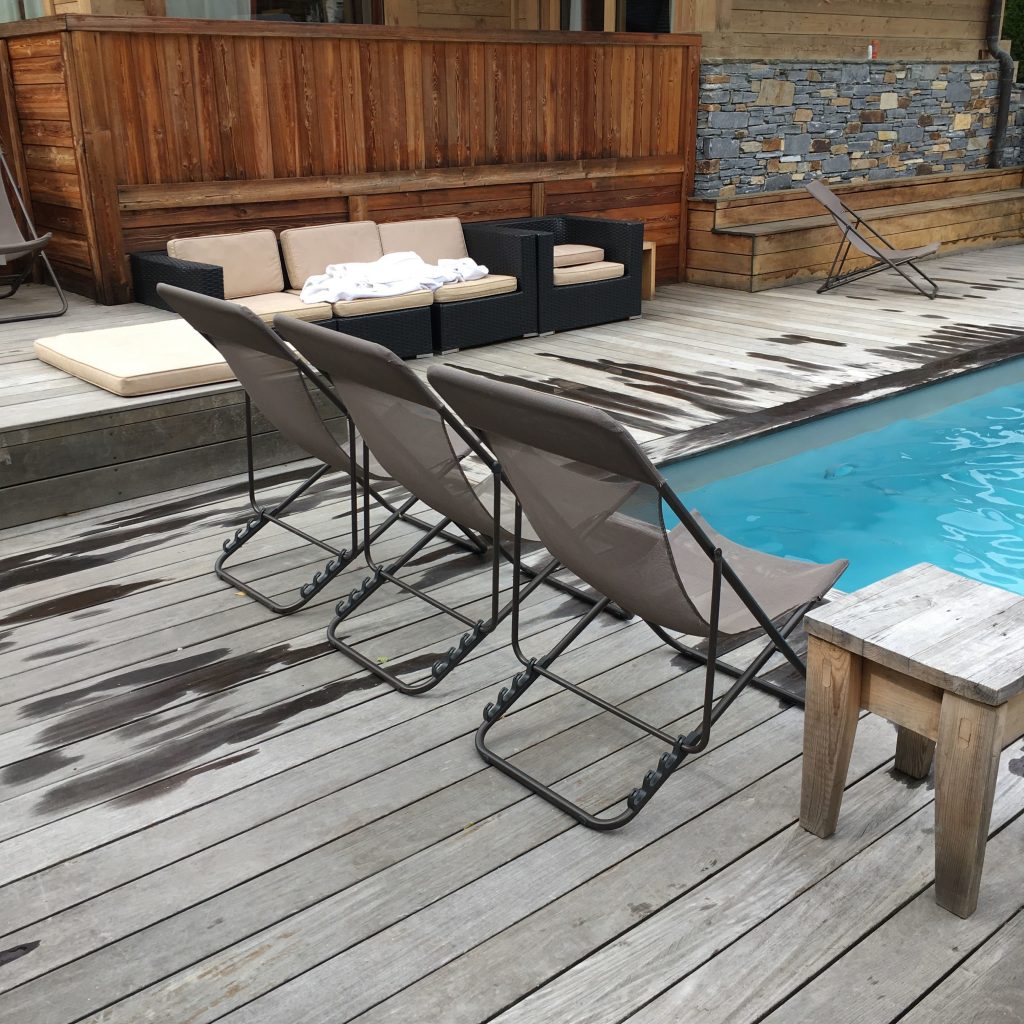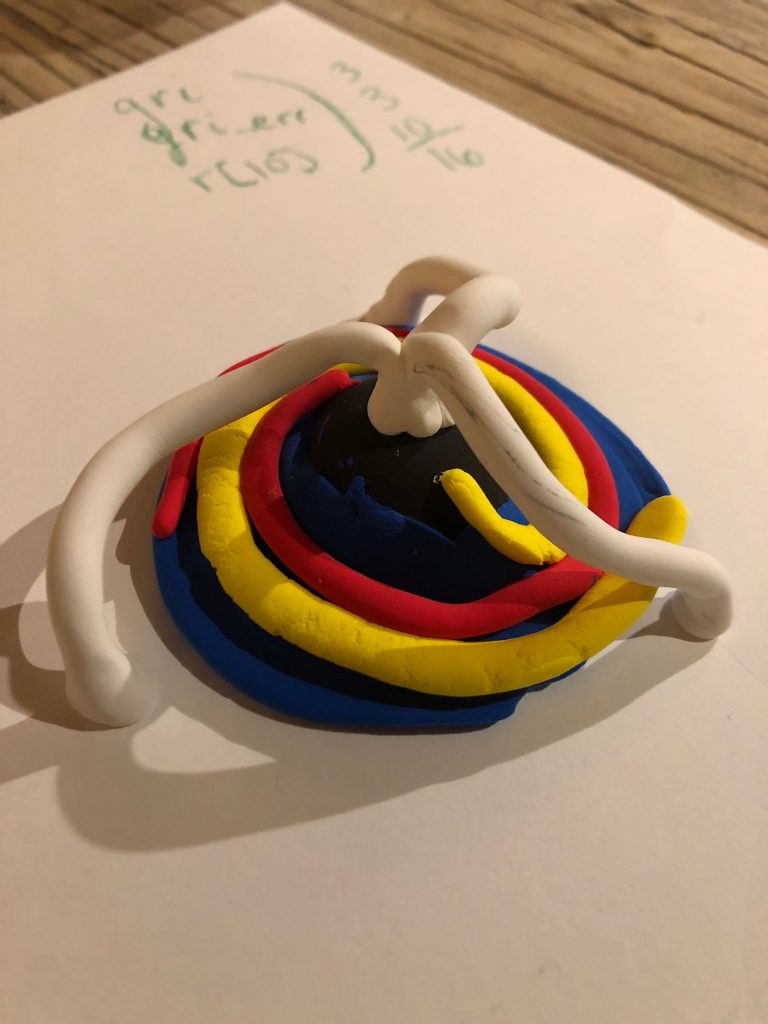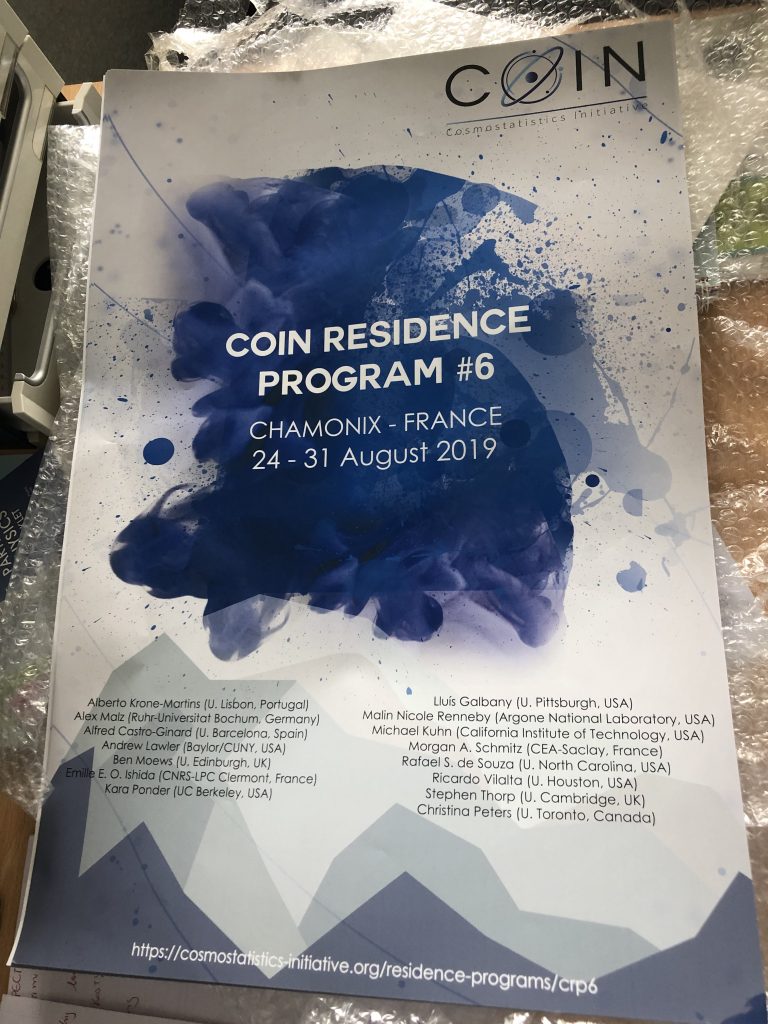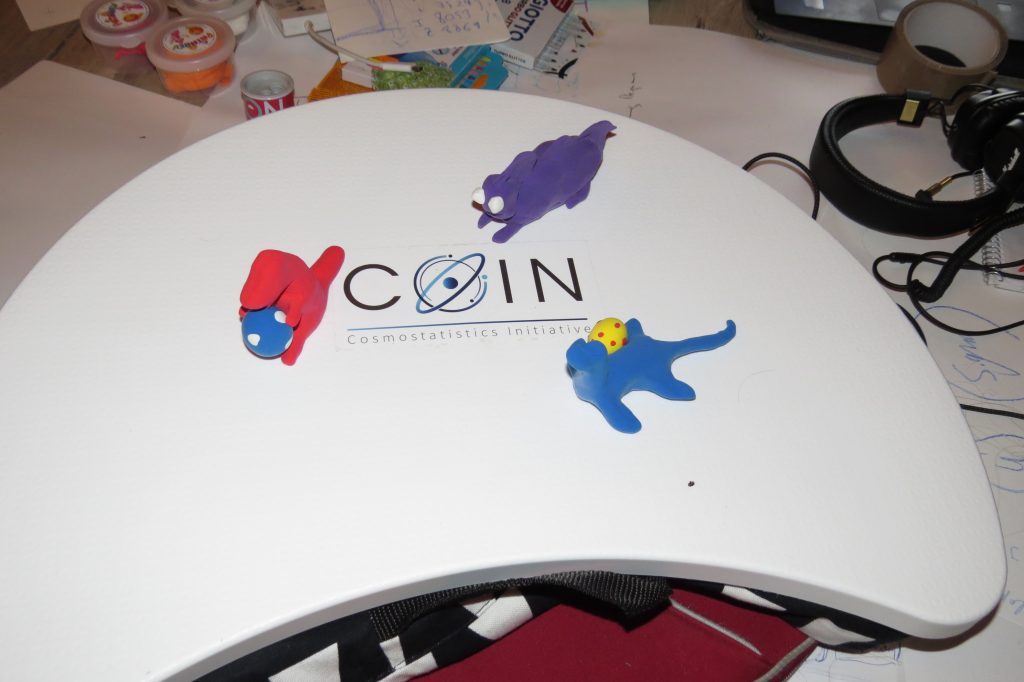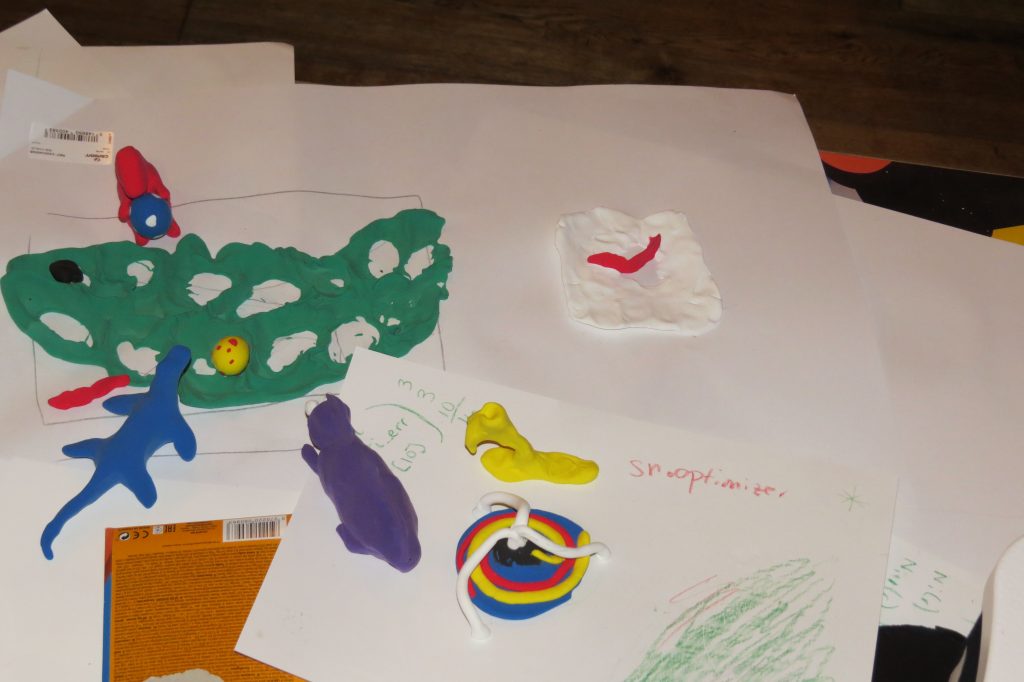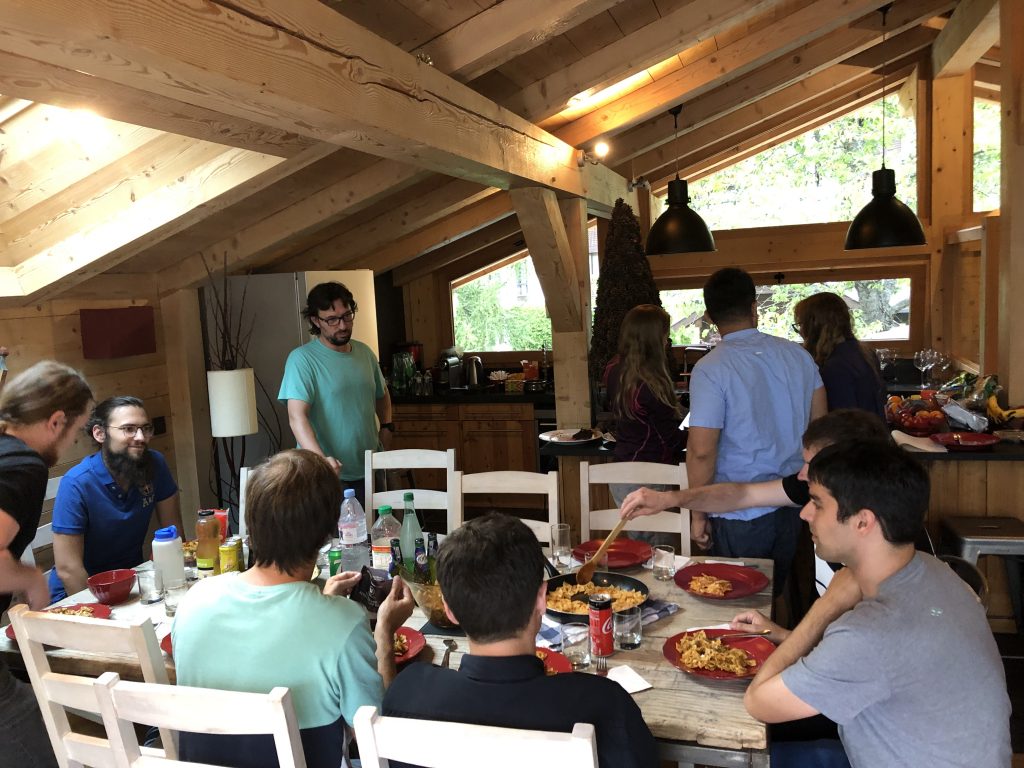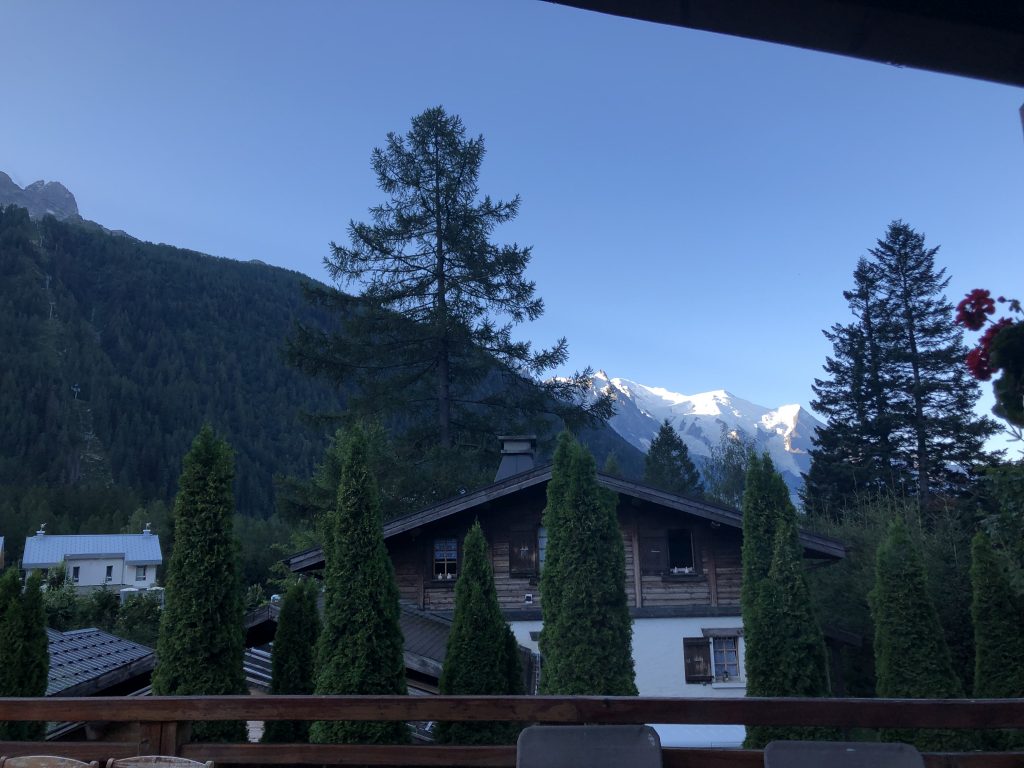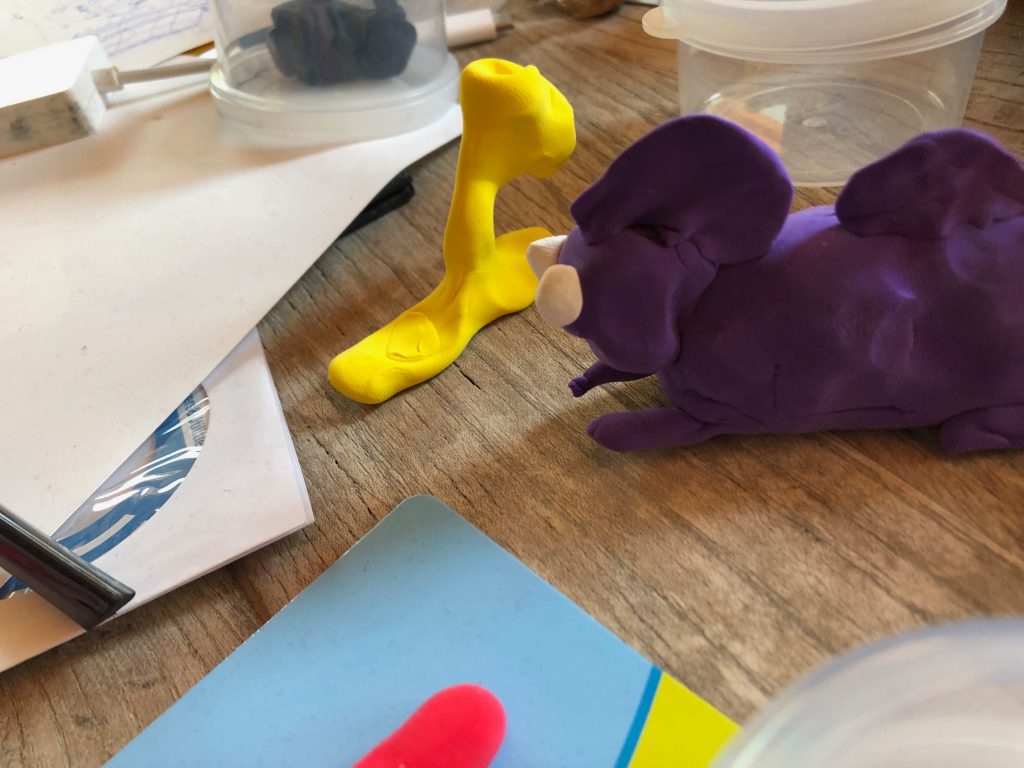The Cosmostatistics Initiative
![]()
The Cosmostatistics Initiative (COIN) is a worldwide endeavour aimed to foster interdisciplinary collaborations to solve data-driven scientific challenges.
The group is co-lead by Rafael S. de Souza (University of North Carolina, USA), Alberto Krone-Martins (Universidade de Lisboa, Portugal) and Emille E. O. Ishida (Université Clermont Auvergne, France) with support from Ewan Cameron (Curtin U., Australia) and Jessi Cisewski (U. Winsconsin-Madison, USA).
Researchers willing to join are welcome to contact any of the chairs!
COIN Residence Programs
An unstructured meeting, offering opportunities for collaborative research, learning, and transference of skills.
The CRPs are composed by young and senior researchers from astronomy, statistics, computer science and related disciplines alike.
The group utilizes a management model somewhat similar to technological start-ups. Our dynamic, non-hierarchical, and people-centric approach enables innovation in scientific research, while helping its members to enhance their career paths.
A complete report of COIN projects, results and previous meetings can be found in the Projects page.

Organizers
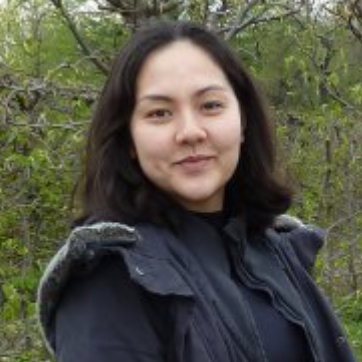
Emille E. O. Ishida
CNRS/UCA, France

Rafael S. de Souza
UNC, USA
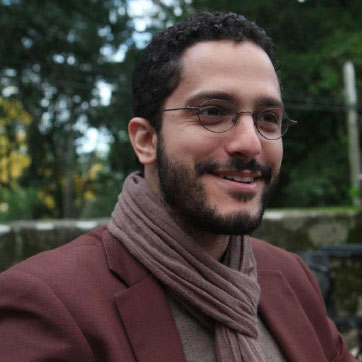
Alberto Krone-Martins
U.Lisbon, Portugal
Location

Chamonix, France - photo from: secretescapes.com
Chamonix-Mont-Blanc is a commune in the Haute-Savoie department in the Auvergne-Rhône-Alpes region in south-eastern France.
The town is doted with a rich and diverse architectural heritage where traditional and modern styles rub shoulders. Wander through the town and outlying villages and you will discover baroque churches and protestant chapels dating from several hundred years, hotels and palaces from the golden age, « Art Deco » facades, traditional farmhouses, colossal villas and chalets contrasting with modern constructions.
Source: www.chamonix.com
Code of Conduct
COIN is composed of members from around the globe with a diverse set of skills, personalities, and experiences. This is one of the characteristics which makes it unique and fruitful.
We require participants to follow these guidelines which help steer our interactions and strive to keep the CRPs an enlightening experience for all members involved.
The official language of CRP#6 is English.
Important:
CRP #6 will be a harassment-free environment for everyone, regardless of gender, sexual orientation, disability, physical appearance, body size, race, nationality or religion.
Please bring any issues to the confidential attention of the workshop organizers.
Directives:
Be receptive to constructive comment and criticism, as the experiences and skill sets of other members contribute to the whole of our efforts.
Be thoughtful when addressing the efforts of others, keeping in mind that often times the labour was completed simply for the good of the group.
Be good and respectful to each other.
Given the informal nature of the program, be perceptive about eventual help needed in the organization and maintenance of the household tasks. Remember that there is no room service or catering. Keeping things clean and organized is up to the group itself.
CRP #6 is a strictly non-smoking event. Smoking is not allowed anywhere inside the venue.
Participants sharing a room should pay attention to tidiness, personal hygiene, sleeping hours and noise. In the common areas, there is no time limit and you can keep working through the night, if you wish to.
Publication and authorship:
The mere participation in one of the CRPs does not guarantee authorship in COIN papers.
Publications developed during the CRPs are lead by volunteer participants who commit to the implementation of all stages of the project during and after the meeting.
All participants who contribute to development of a project will be included in the author list. The order of the authors is decided by the project leader, in common agreement with the chairs, once the paper is finalized.
Reference: Adapted from Python Code of Conduct
Meet the participants of CRP #6!

Alberto Krone-Martins
U. Lisbon, Portugal

Alex Malz
New York U. - USA
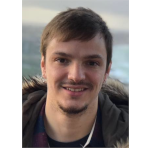
Alfred Castro-Ginard
U. Barcelona, Spain

Andy Lawler
Baylor/CUNY, USA
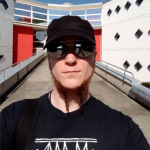
Ben Moews
U. Edinburgh - UK

Emille E. O. Ishida
CNRS/UCA, France
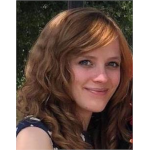
Kara Ponder
U. C. Berkeley, USA

Lluis Galbany
U. Pittsburgh, USA

Michael Kuhn
Caltech, USA
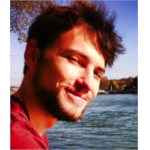
Morgan A. Schmitz
CosmoStat, France

Rafael S. de Souza
UNC, USA

Ricardo Vilalta
U. Houston - USA
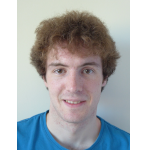
Stephen Thorp
U. Cambridge, UK

Tina Peters
U. Toronto, Canada
Scientific results
Project 1:
Ridges in the Dark Energy Survey for cosmic trough identification
Pre-print - Project Page - Press release
Cosmic voids play an important role in our attempt to model the large-scale structure of the Universe. In this paper, we apply it to 2D weak-lensing mass density maps to identify curvilinear filamentary structures. Our results demonstrate the viability of ridge estimation as a precursor for denoising weak lensing quantities to recover the large-scale structure, paving the way for a more versatile and effective search for troughs.
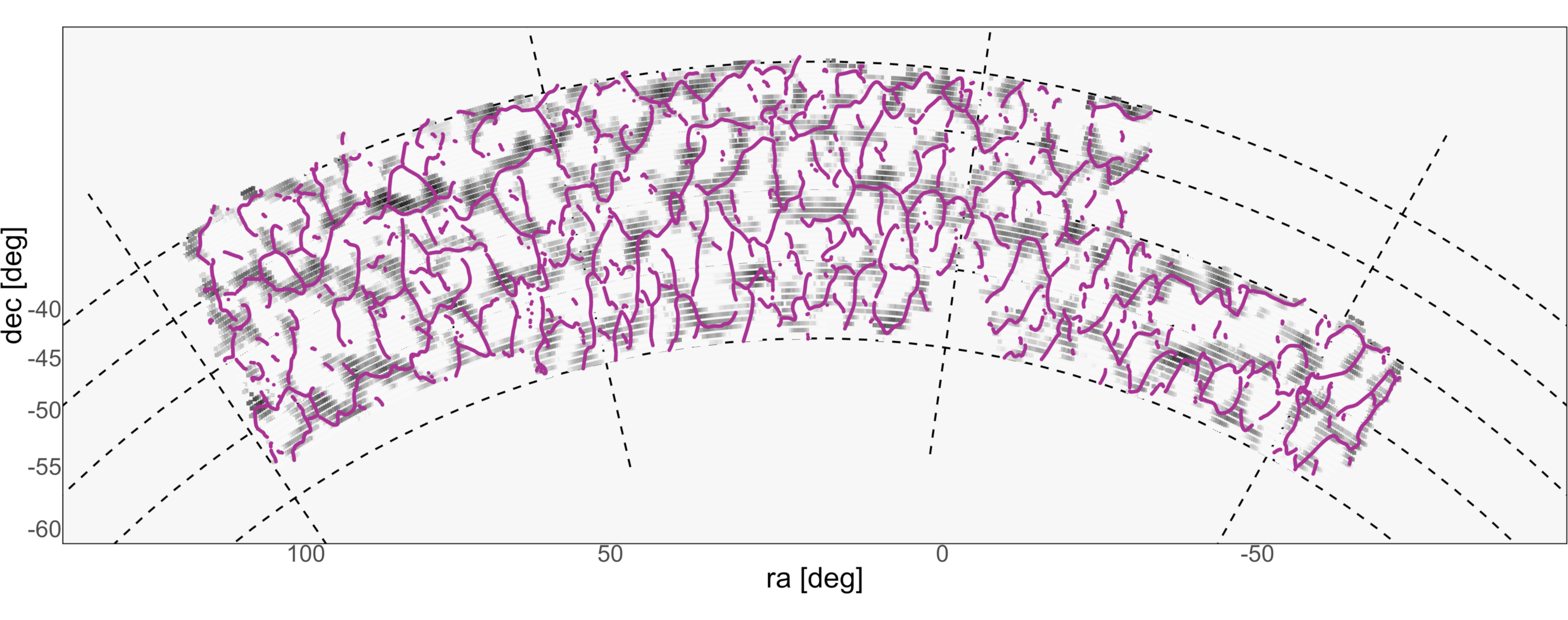
Project 2:
SPICY: The Spitzer/IRAC Candidate YSO Catalog for the Inner Galactic Midplane
Pre-print - Project Page - Press release
We present ∼120,000 Spitzer/IRAC candidate young stellar objects (YSOs) based on surveys of the Galactic midplane between l ∼ 255° and 110°, including the GLIMPSE I, II, and 3D, Vela-Carina, Cygnus X, and SMOG surveys (613 square degrees), augmented by near-infrared catalogs Most of the candidates are in regions with mid-IR nebulosity, associated with star-forming clouds, but others appear distributed in the field. Using Gaia DR2 distance estimates, we find groups of YSO candidates associated with the Local Arm, the Sagittarius-Carina Arm, and the Scutum-Centaurus Arm. Given that no current or planned instruments will significantly exceed IRAC’s spatial resolution while possessing its wide-area mapping capabilities, Spitzer-based catalogs such as ours will remain the main resources for mid-infrared YSOs in the Galactic midplane for the near future.

Project 3:
A graph-based spectral classification of Type II supernovae
This work presents new data-driven classification heuristics for spectral data based on graph theory. As a case in point, we devise a spectral classification scheme of Type II supernova (SNe II) as a function of the phase relative to the V -band maximum light and the end of the plateau phase. Our classification method naturally identifies outliers and arranges the different SNe in terms of their major spectral features. We compare our approach to the off-the-shelf UMAP manifold learning and show that both strategies are consistent with a continuous variation of spectral types rather than discrete families. The automated classification naturally reflects the fast evolution of Type II SNe around the maximum light while showcasing their homogeneity close to the end of the plateau phase. The scheme we develop could be more widely applicable to unsupervised time series classification or characterisation of other functional data.
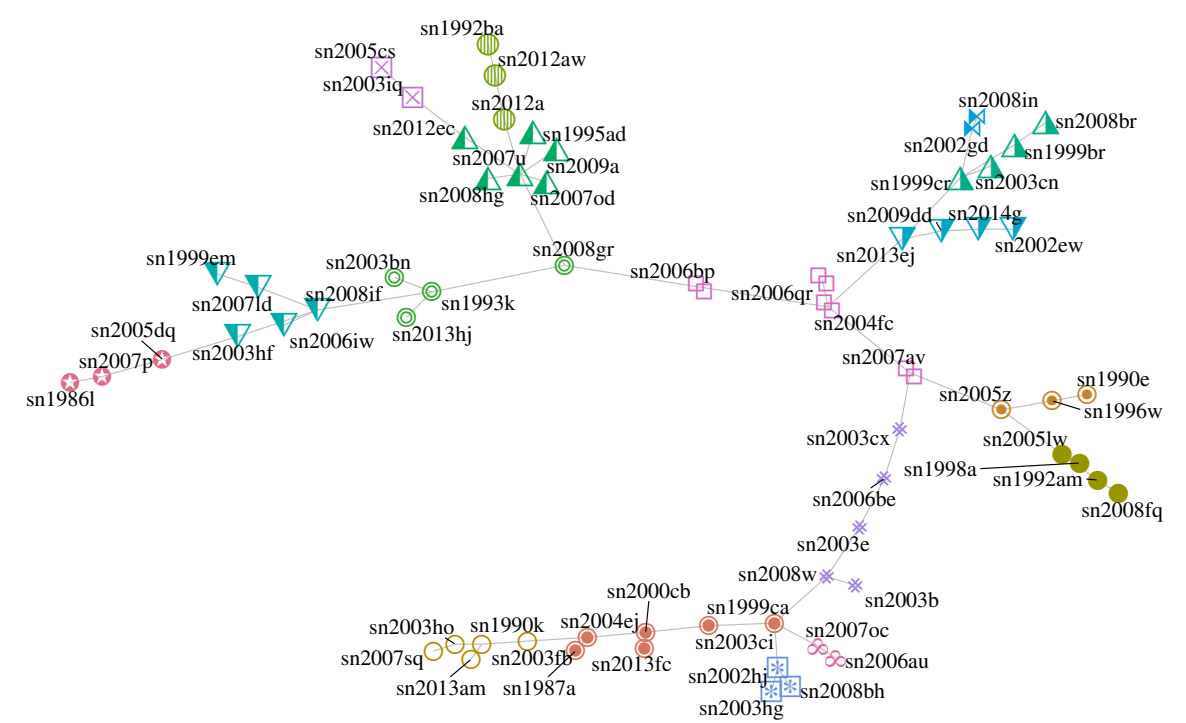

Glimpses of a unique week

